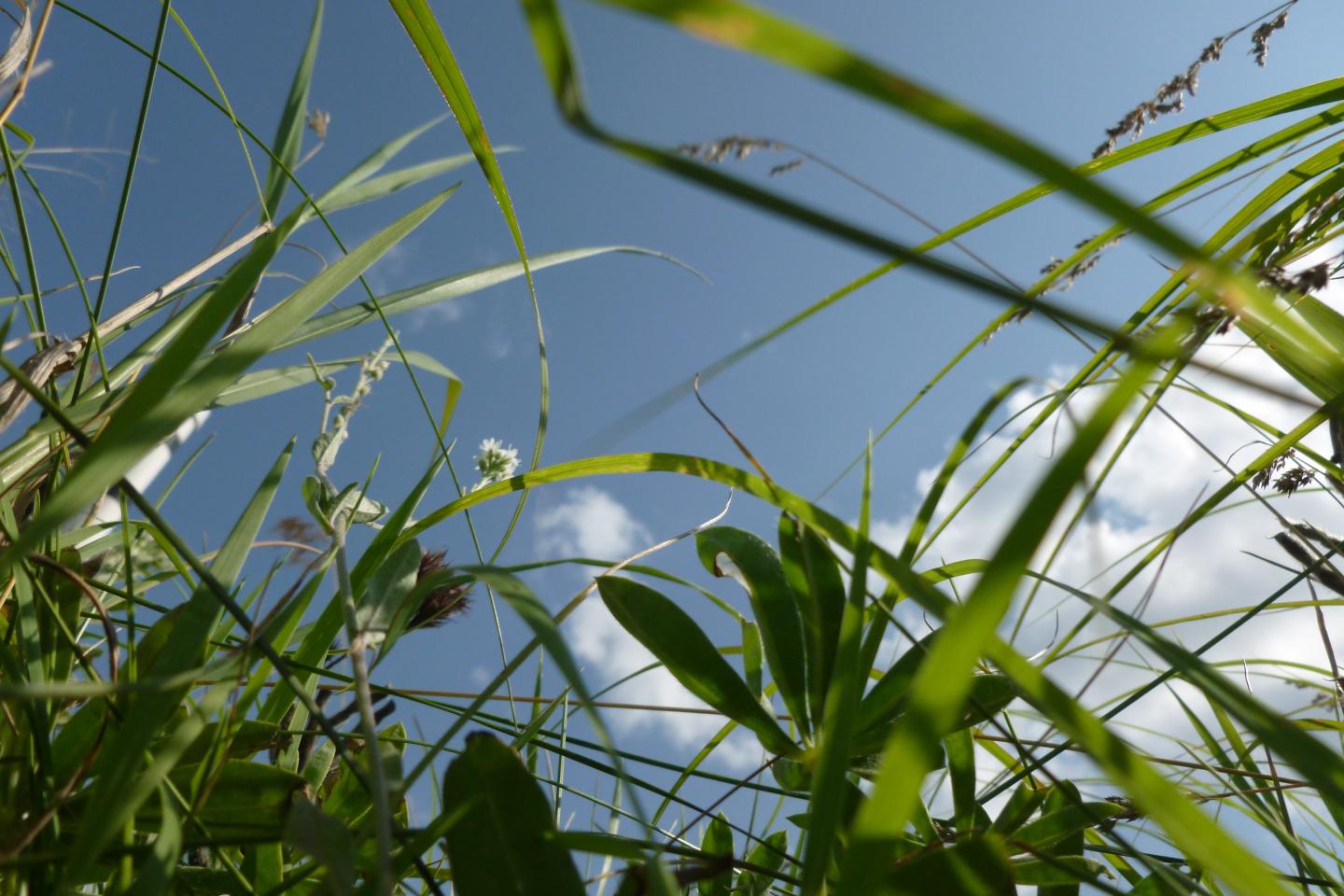
Plant species that have evolved to withstand elevated levels of carbon dioxide grow poorly when moved to a plant community with a different make up, according to a new study in Nature Communications.
"In an effort to save certain species, there has been an interest in the movement of plants or animals to more climatically suitable habitats," said University of British Columbia ecologist Elizabeth Kleynhans, lead author of the study. "Our research indicates how one species adapts in one community may not transfer to other communities."
The researchers tested the impact of community diversity on plant evolution by looking at Kentucky bluegrasses which were exposed to elevated levels of carbon dioxide (CO2) in plots of low or high species diversity for 14 years, part of a long-term climate change experiment in Minnesota. Seeds of these grasses were then transported to Vancouver and their offspring were transplanted back into plots with either the same diversity of species they had experienced as they evolved to elevated CO2, or a different diversity of species.
The response of the grasses to the carbon dioxide depended on whether the grasses were surrounded by the same plant species or by a variety of different plant species.
"If plants evolved to elevated carbon dioxide in one neighbourhood, then experienced elevated carbon dioxide in a different neighbourhood, the benefits disappeared. This result was very surprising to us," said Mark Vellend, a biologist at the Université de Sherbrooke also involved in the study.
The researchers suggest further studies could focus on exposing plants of various species to other environmental changes, such as increases in temperature.
"We might not be able to predict how plants are going to respond to climate change by looking at physical factors like carbon dioxide or temperature alone. We also need to account for who else a species is living with because interactions between species influence evolution as well, " Kleynhans concluded.
###
The project was supported by NSERC, LTER-NSF grants, the Zoology department and Biodiversity Research Center, University of British Columbia.
Media Contact
Chris Balma
[email protected]
604-822-5082
@UBCnews
http://www.ubc.ca





